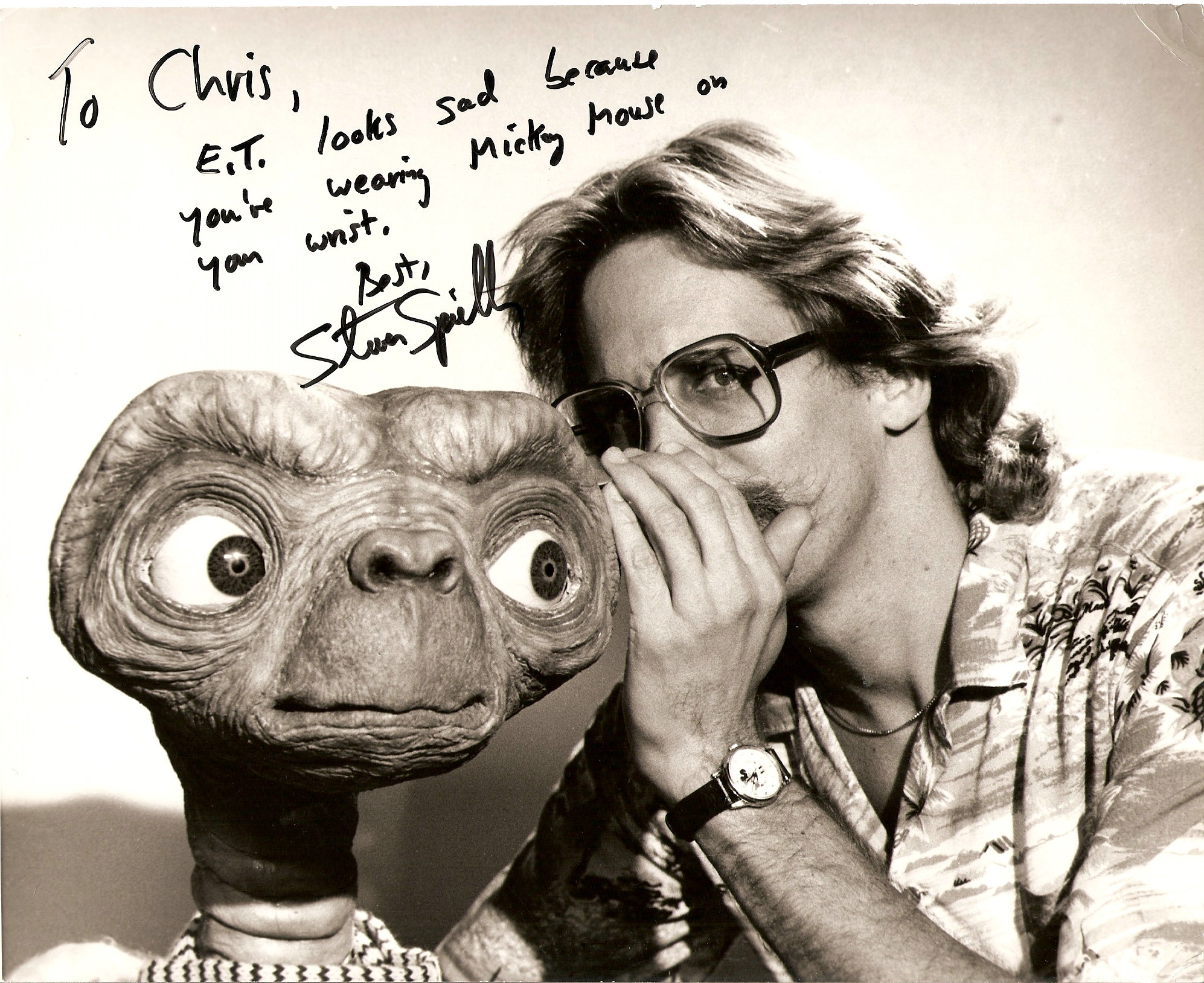Hello ladies and gentlemen, Muldoon here with this week's edition of MEET THE CREW, a column where we film-lovers get to learn a little bit about the filmmaking process from individuals from all sorts of different departments. Each person has their own interesting story to tell, their own unique perspective to share, and an obvious passion for what they do. These aren't individuals who get sent all over the world to promote a film, nor are they the types you'll find on gossip magazines at your local supermarket check out counter - these are the artists behind the scenes. No, AICN is most definitely not a filmmaking website (there are great ones out there), but at the end of the day, you and I (the readers) come here because we love movies, plain and simple. This is a chance to glance behind the camera, an opportunity to truly take a second and appreciate all of the hard work that actually goes into some of our favorite (and some of our least favorite) films. I find myself equally divided when it comes to film blog sites in general, and will absolutely own up to and confess my sincere bias - I've watched countless films with many film blog critics (folks you all are absolutely familiar with) from many different websites and at the end of the day there's a bit of a disconnect. There's an idea of authority or "I deserve the right to beat up on a film" that I'm not quite sure I'll ever fully understand. Regardless, each time I sit in a dark theater and the opening credits start to roll - I get excited and hope for the best. Good or bad, I like seeing the names at the end - names of folks I don't know and might not ever get to meet, but openly just like to see how many folks worked on a given film. Years before I found myself working in film, I had zero clue what some of these people did (and arguably still don't!). I mean "What the hell is a Best Boy? What exactly is it a Line Producer does? Who is in charge of operating the giant animatronic Cujo puppet?" Those questions are why this column exists.
Today we get a little insight into what a Gaffer is. Today, professional Gaffer Chris Strong has been kind enough to answer a few of my odd questions, not for money, but simply becuase he loves what he does. I truly have to give a giant "Thank you" to Chris's son, Cody Strong. I've been trading emails with Cody for several weeks in the hopes of getting his father's perspective and today's MEET THE CREW simply would not have happened if it weren't for him. So without rambling on further, let's take a dip into the ocean of what it means to be a Gaffer with Mr. Strong.
CHRIS STRONG - GAFFER
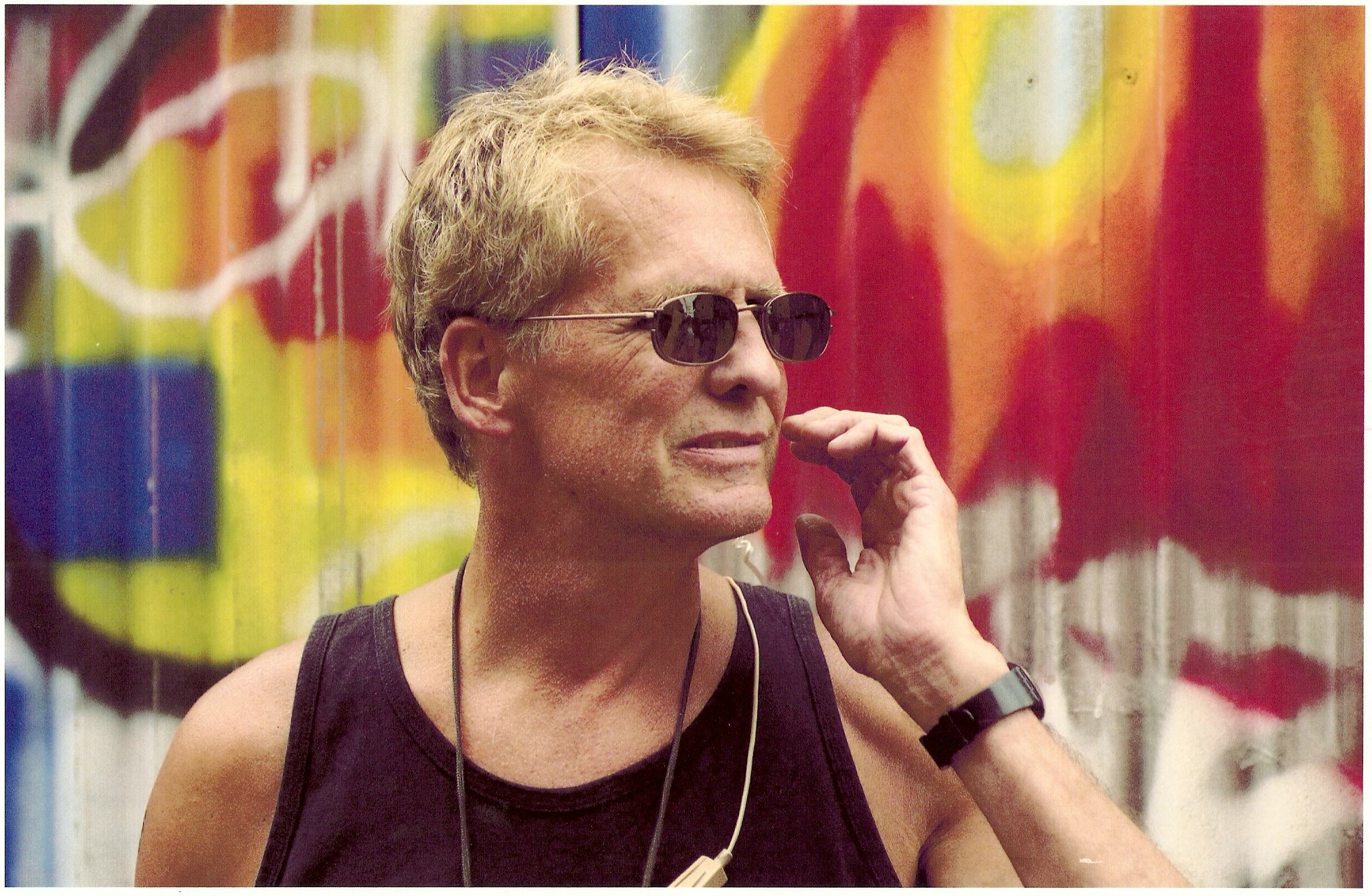
Hi Chris! First off, thank you for taking the time to chat with me today. So what exactly is a Gaffer? What are some of your core responsibilities on a set, and when are you typically hired on to a given project?
A gaffer is the department head of set lighting. My responsibilities are to make sure the set is lit properly in conjunction with the cameraman, director, key grip, and other departments such as property, set decorating, etc. I’m usually hired anywhere from a number of days to 2-3 months prior to the beginning of shooting.
In the lighting world, what are some or your more satisfying tasks? And what are some things that need to be done, but are almost invisible to the average viewer? I can only assume things like lighting the interior of a car at night during a driving scene is motivated or ensuring the color balance of a given set matches, but would love to hear your thoughts! How much of that falls on the Gaffer vs. say, the DP?
Satisfying tasks would be making sure the set is lit to everyone’s expectations, wants, and desires. Almost everything is invisible to the average viewer. Light ratios such as key to fill, color temperatures that would match what you see outside a window - the same color seen coming in the window. Lighting the interior of a car at night or day has several different variables. For example if you’re shooting on green screen - what is it you’re matching to on the exterior, what are street lights coming from traffic in opposite directions. If daytime, is it cloudy or bright, what direction is the sun coming from, are you driving through trees. Unfortunately, many times you shoot the interior of the car on stage without knowing what the exterior is going to look like. My favorite way, especially at night, is to have the car on an insert trailer so you can use existing exterior lights as the main element and you just supplement those. How much falls on me? It depends upon the experience of the DP. And it has a lot to do with pure teamwork. I can do it on my own. I can do it in conjunction with the DP. Or, I can do it the way the DP likes.
While I assume each project is unique in what all it demands of you, can you give us an idea of how many individuals make up your department? Do you typically work with the same folks, or do you tend to move independently?
The number two in my department is my best boy who is in charge of basically everything but lighting the set - the men, equipment, working with production on schedules, etc. Then I have a rigging gaffer and his crew in charge of putting in lights and cable before we arrive on the set and taking them away when we are done shooting. On the set I’ll have, depending upon what we’re doing, a number of electricians or lighting techs and a dimmer board operator who controls all the lights that we have on a dimmer system. I try to work with the same group of guys as often as possible because we are like a well oiled machine. I can just totally rely on my team to get the job done. They know their job, and that leaves me free to be there for the DP and concentrate on lighting the set. But I want to stress the point that getting the job done IS teamwork with every department.
What exactly brought you to being a Gaffer? Was there any one in particular who helped give you your first break?
I started in the business when there was still a studio system. I started out on a rigging crew at Universal, and the “old timers” taught the new guys how not to get electrocuted - all of the safety rules. But I had to pretty much learn about the equipment, how to cable, the special knots, etcetera by paying attention. There was no real mentoring from other guys. Later, if you were lucky, you’d get on a t.v. show or a “movie of the week.” There, if you were attentive, you’d start to learn about actual lighting. Also, in those days you were basically an employee of the studio. The dream was to finally be good enough to transition to the “outside” which meant a commercial or movie that had an independent crew. One of the finest gaffers, Jim Plannette, was doing a movie on the lot, and I was one of the studio electricians on his movie. Eventually, he asked me to be part of his crew on another movie, and I left the studio system. Jim Plannette really gave me my first big break. From him I learned professionalism, how to work with other departments, to be respectful of everyone, and how important your demeanor is to having a smooth running set. Eventually, I started working for a big commercial gaffer, Bobby Smith, as his Best Boy. He worked a lot with the DP Andrzej Bartkowiak. When Andrzej was offered “Prizzi’s Honor,” Bobby couldn’t gaff it due to his wife’s illness, so Andrzej made me his gaffer. From there I did seven more films with Andrzej.
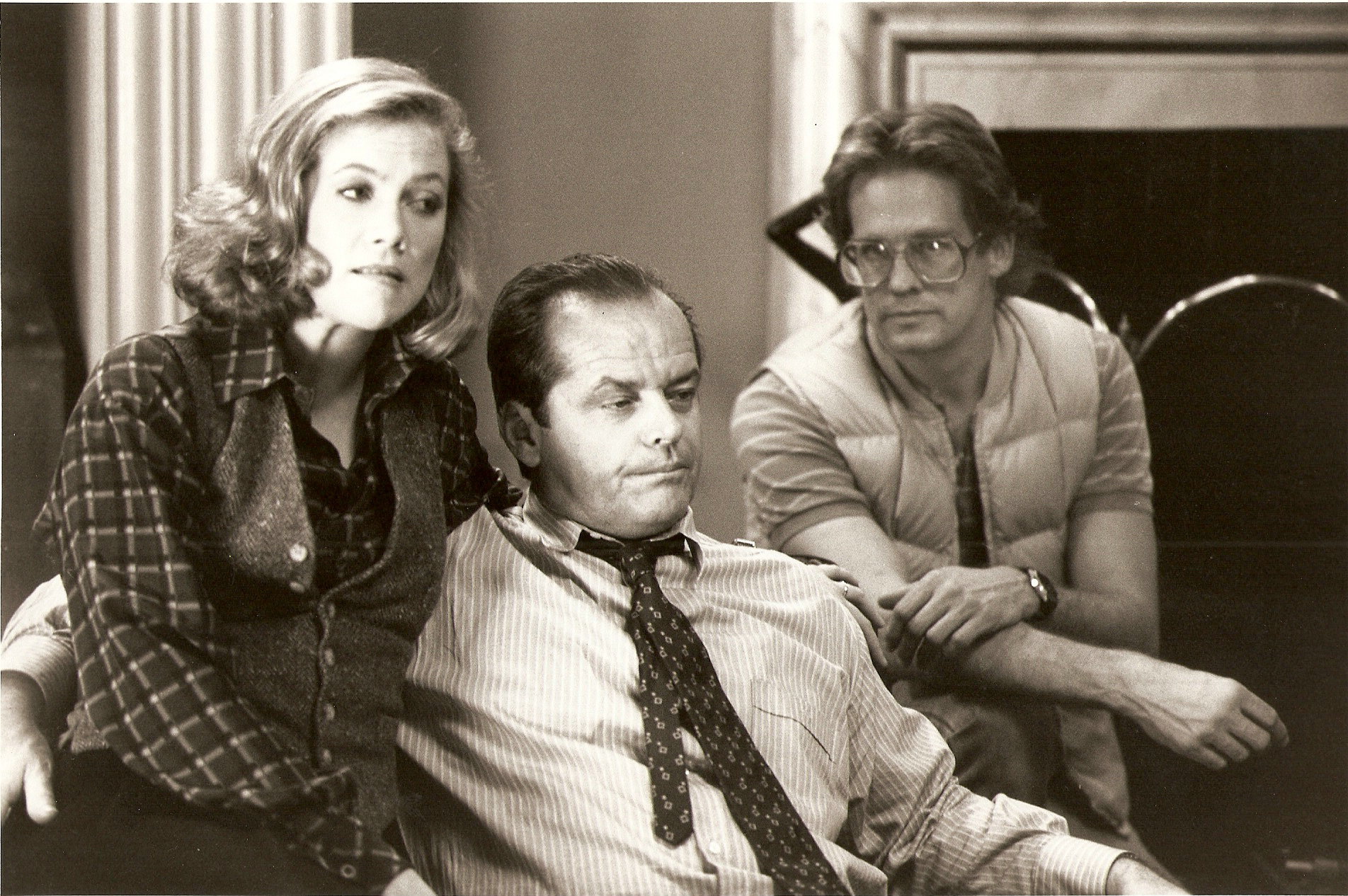
Is there a shot/sequence/moment that you can point to and say, “It’s that way because I was there and had it of been anyone else, it would have been different.” I guess a better way of asking, is given your long list of credits – are there any sequences or shots in a film or TV show that ended up on screen how they are as a direct call from where you were sitting/standing/rigging? In that same vein, how much control would you say a Gaffer has on the look of a project?
A particular scene in Buffy was a long fight sequence in a subway car. It was a stationary set on stage and it had to feel like it was an actual subway car going thru a subway tunnel in a major city. No one could figure out how to simulate the movement of the subway car. And for whatever reason, an idea came to me. I figured that both sides of the train should have a sense of movement. So at the end of the subway car, I put a 20K on one side and a 6K Par on the other side. On the other end of the subway car, I put a 4’x4’ mirror at a 45 degree angles to the 20K and the 6K Par, so that the light would travel around the car in both directions. I then had two grips and two electricians on both sides of the car, each holding a 2’x2’ reflector that panned back and forth into the lights surrounding the car. The result was a very realistic feel and look of a moving subway car. To this day, I don’t know how the idea came to me. There’s an old saying in the business - “Would you rather be good or lucky?” A combination of both works for me!
On the second part of your question as to control a gaffer had on a look - it all depends on the situation. There are DPs that are knowledgable about lighting and have precise ideas as to what they want, and there are often DPs that prefer a gaffer who can light the set and allow the DP to concentrate on his/her camera work. I have been blessed with the ability to have a good visual eye for lighting, and often I will do from 50-90% of lighting the set before the camera man will come in and do fine tuning. I have anywhere from none to all of the control of lighting.
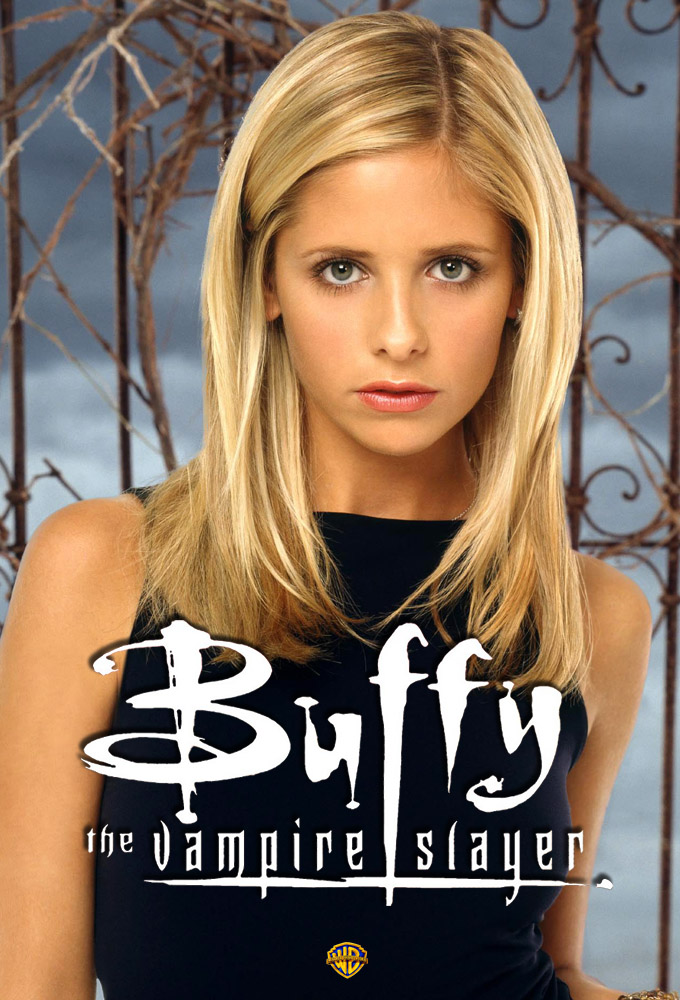
When you are hired on to a given project, which departments do you typically work the most with and what are some things you do or questions you ask of/with them to ensure at the end of the day the best possible job was done on that show?
The departments I work with the most are camera, grip, props, production design, set decorating, and of course the director and his assistants. My questions for the camera department are “is this the shot?, are these the sidelines?, is this the correct framing?, what ASA are we at?, what stop are we looking for?” For set decorating - “is this where furniture is gonna go?, are these the right practicals?, are there specific practicals that require specific bulbs and do you have spares for them?” My work with the grips has to do with making sure lights are properly cut, softened, shaded, etc. And, of course, with the director as to the actual action of the scene, where the actors will start and stop and such. Also, in the AD department making sure that an actor’s stand in is very close in height, weight, hair color and skin texture and color. Skin color is very important, especially when lighting African American actors as their skin has such a diverse color range.
As you’ve worked on quite a few projects, like UP IN THE AIR, ZODIAC, SE7EN, SPEED, ET, BUFFY and more – out of your career, which three films(or projects) are you the most proud of or have a special place in your heart? Something where you not only walked away with a paycheck, but a feeling of pride.
The three films that are most important to me of course would be “Se7en”, due to its iconic look; “Zodiac”, for the simplicity in the way it was shot and lit; “The Curious Case of Benjamin Button”, for all it took to make a movie look magical... and in my younger days as an electrician, working on the movie “Being There” and seeing how beautiful something could be with extremely simple lighting. The gaffer on “Being There,” Gary Holt (another exceptional gaffer), taught me that it’s just as important what you don’t light, as what you do light.
Also, I can’t do an interview without mentioning the “Zodiac” DP Harris Savides. He was not only the most brilliant DP, but the kindest human being. He taught me how to light a set so that it didn’t look lit, but looked totally natural.
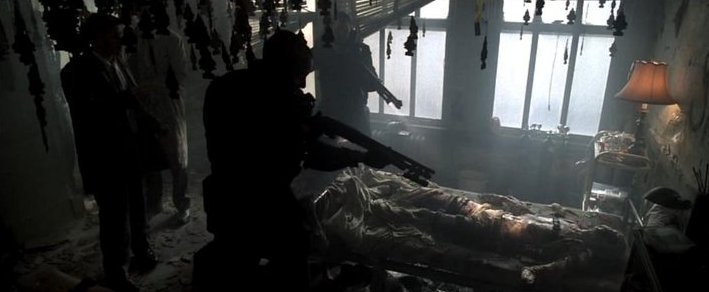
What is a “typical” day in your life like during a given shoot?
A typical shoot day is being on set to watch the first rehearsal, the actors leave, and then the stand-ins come in and you start figuring out camera angles and lighting for that scene. Then you start lighting. The same process is repeated throughout the day until they call wrap.
Can you share any stories from the trenches? Are there any projects that you had to handle a problem in any incredibly unconventional way?
Without naming any names, there was a time after a major rehearsal the DP was nowhere to be found and I had to light the entire set by myself, without his input. Then he came in and took credit for it. You’d be surprised how often this situation happens to gaffers in the business. Again, no names. There are times when the cameraman might light the set, the director doesn’t like it, then the cameraman turns to me and says “Chris, light it yourself” and then walks away.
I ask this of all MEET THE CREW individuals, but if by chance you weren’t in film, what do you think you’d be doing with your life?
When I was discharged from the Air Force in 1973, I was given the opportunity to either work for the Beverly Hills post office or start in the film industry. The mother of my then girlfriend (who is now my wife) was dating an electrician - he offered to get me into the industry. I think I made the wise choice. After all, I’m one of the few gaffers left that started at a time when some of the great Old Hollywood stars, directors, and DPs were still working. I’ve been lucky to work with Bette Davis, Barbara Stanwyck, Joseph Cotten, Olivia de Havilland, John Huston, Jack Cardiff, Sidney Lumet, Stanley Kramer, Hal Ashby, Ken Russell, Phil Lathrop, and others.
To wrap up today’s chat, do you have any advice for potential filmmakers in the AICN audience? It could be for folks looking at a career in film/TV lighting, directing, or anything really. Perhaps you’ve witnessed first hand some pitfalls to avoid. To take it a step further, do you have any advice for no budget filmmakers in the audience? Perhaps a rule of thumb with color temperatures or how to work more efficiently on a tight budget.
Advice for potential filmmakers - if that’s your heart’s desire, go for it. BUT the changes I have seen in the business over the past 40 years would make it totally undesirable for me to start in it today. Our pay scale has dropped drastically - because of the runaway production out of Hollywood, the competition for jobs is immense. 90% of motion pictures are now shot in Georgia, Louisiana, or Canada. Mostly what’s left in Los Angles are low budget features and episodic TV, with 16-18 hour days. Advice for no budget filmmakers - figure out a way to get a budget, because you get what you pay for. In my experience, people are tired of working for nothing and being promised a later incentive that never happens. To me, lighting is an art. Seeing it that way has given me a sense of satisfaction and in spite of how the business is now, at the age of 65, with over 90,000 hours in the business, and a prosthetic leg (that’s another story), I still love what I do!
There we have it folks, some great stories and insight from an artist who loves what he does and continues to light some incredible visual stories. Chances are, you've seen Chris's work in a theater or on your TV. It's been a privilege to have this brief Q&A with Mr. Strong and I would truly like to thank him for his time. It's been a privilege and I hope you fine folks found it interesting. (Thanks again, Cody!) I hope to see you all next week with another bit of insight from another talented individual.
If you work in film or television and feel like shedding some light on what exactly your position entails, then please feel free to shoot me an email with the subject line "MTC - (Your Name) - (Your Position)." I'm not here to get scoops or dirt on anyone, simply here to educate and ask for advice to any of our filmmakers in the audience.
If you folks are interested in finding out what other positions on a film are like, then check out any of the links below:
Robby Baumgartner - Director of Photography
Thomas S. Hammock - Production Designer
Seamus Tierney - Cinematographer
Brian McQuery - 1st Assistant Director
Shannon Shea - Creature/VFX Supervisor
Christopher A. Nelson - Special Makeup Effects Artist
William Greenfield - Unit Production Manager
Jeff Errico - Storyboard Artist
Monique Champagne - Set Decorator
Arthur Tarnowski - Film Editor
Justin Lubin - Stills Photographer
- Mike McCutchen
"Muldoon"
Mike@aintitcool.com
![]()

